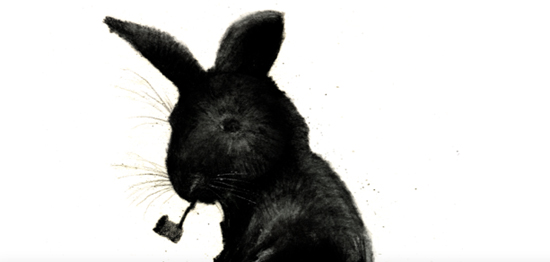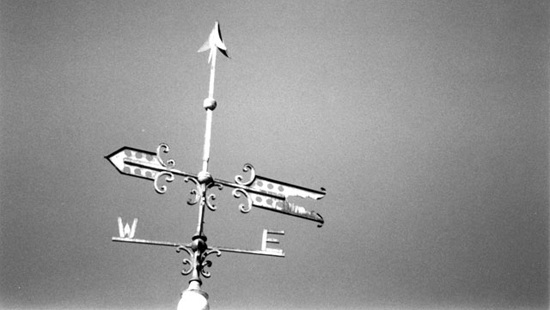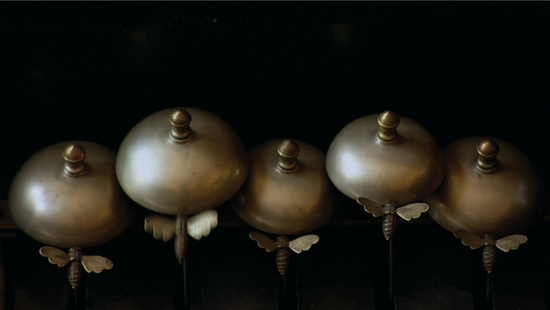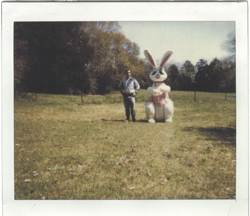There are a lot of barriers to entry in the film business. Gender,race, and class get a lot of attention (but still not enough to facilitate significant change… yet). For many reasons, indie film is also looked at as the domain of youth. We hear all kinds of stories of Sundance whiz kids bursting on the scene. But what about those of later years, who have lived some serious chunks of life before stepping behind the camera? Can something be done to encourage more work from an older sector? What would that yield?
I was moved, mesmerized, and pleasantly befuddled by Bob Person’s GENERAL ORDERS No. 9 this year, and you are soon going to get a chance to see it. I screened it my film series in NY and Bob came in for it. Bob did not rush out and make a movie after graduating college. He did not come to this art form with youth infected innocence, yet he has an uncanny ability to make the common strange again. Bob has a really unique eye and one can not help but be forever changed from the pleasure of viewing his film. It is not surprising though, seeing what he likes in cinema. Today he discusses that, and his rather later start, and to me, both are a much needed glass of cool cool water.
General Orders No. 9 and the Herzog Astrology
Though a clear violation of the magician’s code, I’d like to relate some things about the origins of my film, General Orders No. 9, and even though it requires a blitzkrieg of name dropping, to share how important other films have been to its development.
I took the long route to filmmaking. Though I had been painting since childhood and writing since high school, it wasn’t until I discovered a well-curated rental store that I encountered film. Lacking direction and unemployed, I spent a lot of time watching movies. Like James Agee with his ear against the speaker grille to better absorb Beethoven’s Ninth, I watched them full-on and without distraction.
I sat on the floor of my apartment for Andre Rublev, The Sacrifice, and Fata Morgana, each responsible for my preoccupation with landscape. I also saw Eraserhead and Heaven and Earth Magic, both to blame for my hermeticism. All of them were trials of patience and endurance, and all of them were life-changing. Without them, I would have no idea of what a film could be and no idea of what was possible and permissible.
I visited theaters and remember seeing Wings of Desire, Blue Velvet, and The Cook, The Thief, His Wife & Her Lover. Each time, I left the building in ecstasy with what Burroughs called “the sweet clean feeling of being born.” I went to Double Take Film Festival (now Full Frame) and saw a new print of Night Mail. Back at home, I took in other Grierson docs and Lorentz’s, The Plow that Broke the Plains. This became a model of tone for what would become General Orders No. 9. After this southern documentary festival, I decided that I would return with a southern doc of my own. And years later, I did, but the film was not accepted.
General Orders No. 9 is a film I made for myself. I put things in the film that I wanted to see projected in a theater in a certain sequence, hoping it could act as a cure, answer a question, or cast a spell. I didn’t know at the time that a film can only work its magic for the audience, not its creator.
I wish I could say I composed the film’s structure in musical notation during an eight hour session at the piano, but I can’t. It took much longer. Just to illustrate, when I began, the best path from video to film was PAL DVCAM, and when I finished, there was the Red. The first test shots were with the VX1000 and a copy of RES magazine. The final post was in an L.A. Pablo suite.

Like everything grandiose and expansive, my film was driven by feelings of desire and sadness. But like only those things that become film projects, these feelings had their counterparts in images and words. On paper, the material looked fragmented and dissolute. I had no idea if the film would work, but I hoped it would. For some reason, I believed that if I used images that were deeply felt and words that arose naturally and spontaneously, that the work would cohere. It’s the belief that if you are yourself with enough constancy, and pursue something with enough particularity, you will end up with something real. For me, most of the time, the film works well enough, and at least half the people who have seen it think so too.
I may have had this conviction, but the dominant mood was one of uncertainty. It’s the repeated pattern of not being sure about something, but doing it anyway, again and again. Years passed under this directive until the condition of uncertainty became comfortable and rote, strong enough that I could transmit the idea and convince others that it was worth working on.
If there were an astrological system based on Herzog’s filmography, this would be the Aguirre Phase, a period of monomaniacal obsession that resists all doubt. This phase is dangerous, destructive, and absolutely necessary. But at some point, the film is finished, or the film is finished with you. Other people start to see what you have done, and it’s a rough re-entry back to reality. You become aware of the distance between the vision and the reality of the film you have made. Into that gap falls the shadow, and you make peace with it or you don’t.
If you are lucky and the vision is strong enough, the vision will continue to recede away from you, just out of reach, and you will continue to pursue it. This is a very good feeling, and it’s a comfort to know there’s still something there. It is this that allows you to make another film. This is the Kaspar Hauser Phase, a period of muse-guarding and dreaming on the sly. There is uncertainty now as then, but now it has its own raison d’etre. It’s generally uncomfortable, but all in all, a gift for which you should feel gratitude. It’s a good time to think about what you like and what energizes you.

I like to feel disoriented during a film and to struggle to get my bearings. I like not knowing what I’m seeing. I like looking at what is usually the background in other films, landscapes and the backsides of buildings. These things can be as articulate an a fine actor and you can get them for much less. I like moments of pure surprise, of crisp, fresh novelty as in Aguirre. Suddenly, there’s a horse standing in the jungle at the river’s edge. What’s a horse doing there? It was there, and now its gone.
There is a variety of aesthetic pleasure that I have experienced only in film. Many of them are from Herzog, the windmills seen by the soldier in Signs of Life and any of the visions of Kaspar Hauser. Others were the demented circles of movement with no purpose and no end: the monkey-Christ parade in Even Dwarves Started Small and Stroszeck’s abandoned and burning truck.
Some films tell you what they’re about in one shot, even The Usual Suspects. There’s a shootout on a freight dock. The camera isolates and holds on a tangle of heavy dock ropes around a piling – part Rorschach and part prefiguring of the knotted confusion to come. And Blue Velvet: Jeffrey wakes from a nightmare and reaches up along the wall of his boyhood room. The camera glimpses an object hanging in the dark above him. I think it’s a carved coconut head souvenir, but who knows? A face, but whose? A treasure of childhood, but what? It’s his innocence on the wall, in shadow and disfigured.
What is it you want most from the cinema? Isn’t it a feeling of escape, a sense of freedom? And isn’t the greatest freedom an escape from yourself, from the limits your own mind? This is not a taking leave of your senses; this is a willing disavowal of your own judgement, from the one who knows everything and keeps you from wonder and awe.
Remember Keats’ Negative Capability? He said, it’s “when a man is capable of being in uncertainties, mysteries, doubts, without any irritable reaching after fact and reason.” I guess that’s why my favorite thing to hear from an audience member is “I was affected by it, but I don’t know why.” To me, the greatest power of film is to suggest the liminal, the numinous.

And what is there to learn from the German perambulator? Is there a lesson beyond the caricature? Through his rough single-camera stagings and clumsy dialogue, he issues a radiant naturalism that simply gives me a feeling of joy. Way above the film-by-film judgements and the thumbs up/thumbs down binary code, there’s a narrative that is the real message of his films – the truth of the human being’s role as creative. Fearlessness and self-confidence, trust in the process and the will to action, these are gifts to us all that will remain long after the last blogger goofs on his accent.
The idea for General Orders No. 9 was to honor a place I loved, but the rest came from other films. It was the love of other films that made me want to make films. And even more, it was the unseen, mystical support of other filmmakers, a sort of communion of saints, that made it possible.
Do I wish there were more films that suit my particular taste? Do I wish there were a larger audience for these films? No. It’s enough for me, and I won’t presume to upset or improve upon the order of things. It’s Every Man for Himself and God Against All.


Robert Persons is a filmmaker born and raised in Middle Georgia. After spending considerable time living in Tennessee, Illinois, Colorado, and South Carolina, he returned to his hometown where he began writing the script for what would become General Orders No. 9. 11 years later, the film premiered at the 2009 Atlanta film Festival. He lives with his wife and children in Atlanta. General Orders No. 9 is his first film.


